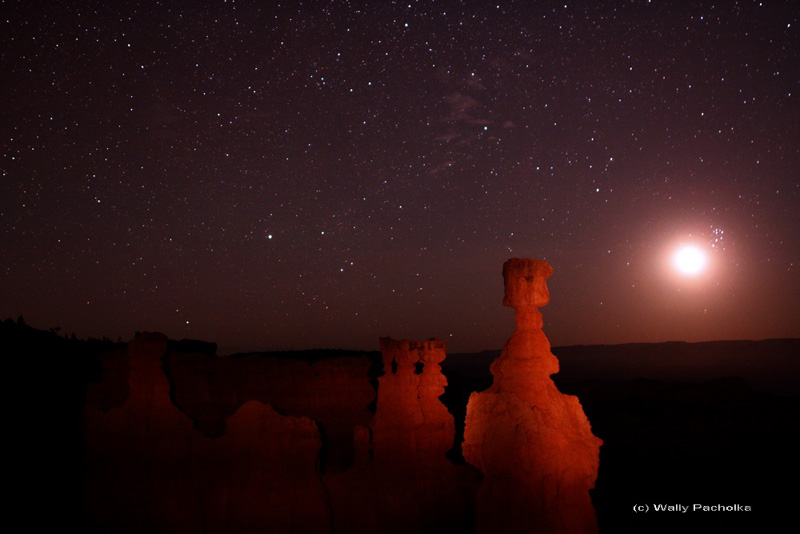
|
Explanation: The strange-looking rock formations in the foreground of this skyscape are called hoodoos. Towers of weathered, eroded sedimentary rock, hoodoos are found in arid regions of planet Earth and are particularly abundant in an area known as Bryce Canyon National Park in southern Utah, USA. The more familiar night sky pictured here was recorded early Monday morning and includes bright star Capella, alpha star of the constellation Auriga, left of center. On the far right, a very over exposed crescent Moon dominates the sky in close conjunction with the sister stars of the Pleiades cluster. The curious shapes of the two tall, illuminated hoodoos suggest their popular monikers; Thor's Hammer (right) and The Temple of Osiris.
|
January February March April May June July August September October November December |
| ||||||||||||||||||||||||||||||||||||||||||||||||
NASA Web Site Statements, Warnings, and Disclaimers
NASA Official: Jay Norris. Specific rights apply.
A service of: LHEA at NASA / GSFC
& Michigan Tech. U.
Based on Astronomy Picture
Of the Day
Publications with keywords: pleiades
Publications with words: pleiades
See also:
- APOD: 2025 April 8 Á Moon Visits Sister Stars
- APOD: 2025 March 5 Á Seven Sisters versus California
- APOD: 2025 January 27 Á Pleiades over Half Dome
- APOD: 2024 December 9 Á Pleiades: The Seven Sisters Star Cluster
- APOD: 2024 September 29 Á Seven Dusty Sisters
- APOD: 2024 September 3 Á Quarter Moon and Sister Stars
- APOD: 2024 January 29 Á The Pleiades: Seven Dusty Sisters
